
During our month long China Odyssey we had hot and humid weather but as we arrived in Suzhou it was raining and the wind was blowing. We actually arrived smack in the middle of a typhoon hitting Suzhou. Normally people would stay indoors during a Typhoon and only venture out if it was really necessary. But unfortunately we only had one full day to explore Suzhou so actually braved the Typhoon.
Originally founded in 514 BC, Suzhou has over 2,500 years of rich history, and relics of the past are abundant to this day. The city’s canals, stone bridges, pagodas, and meticulously designed gardens have contributed to its status as one of the top tourist attractions in China.
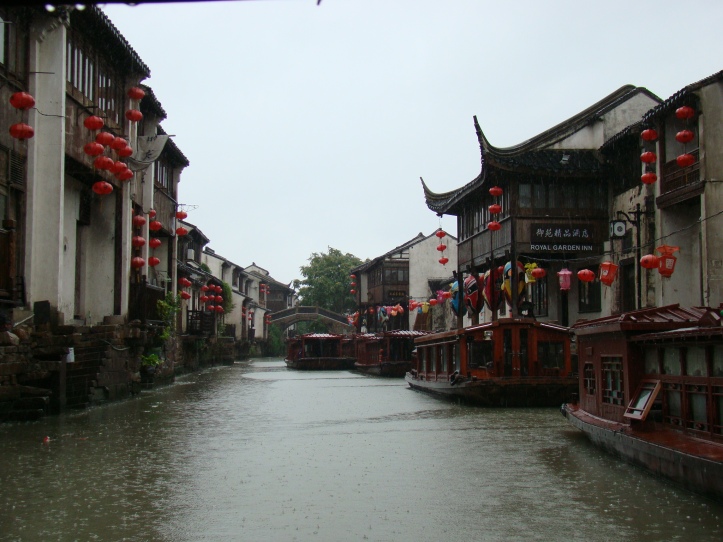
Armed with umbrellas and rain jackets we took the last outgoing boat to see what is known as the Venice of china.
It was pouring down and the wind was picking up so we had to appreciate the scenery through rain streaked windows or get soaked when we opened it to take a picture.
Both eight hundred-year-old Pingjiang Street and twelve hundred-year-old Shantang Street made it to the list of China’s “famous history and culture streets”, and both feature elegant bridges, flowing waters and unique architecture.
When Bai Juyi (772–846), a famous poet of the Tang Dynasty, was mayor of Suzhou, he got the people to dig ditches and build roads. They developed a waterway, the Shantang River, and Shantang St to connect Tiger Hill with Suzhou. Then the street gradually became a popular tourism resort with Wu characteristics and plenty of ethnic customs.
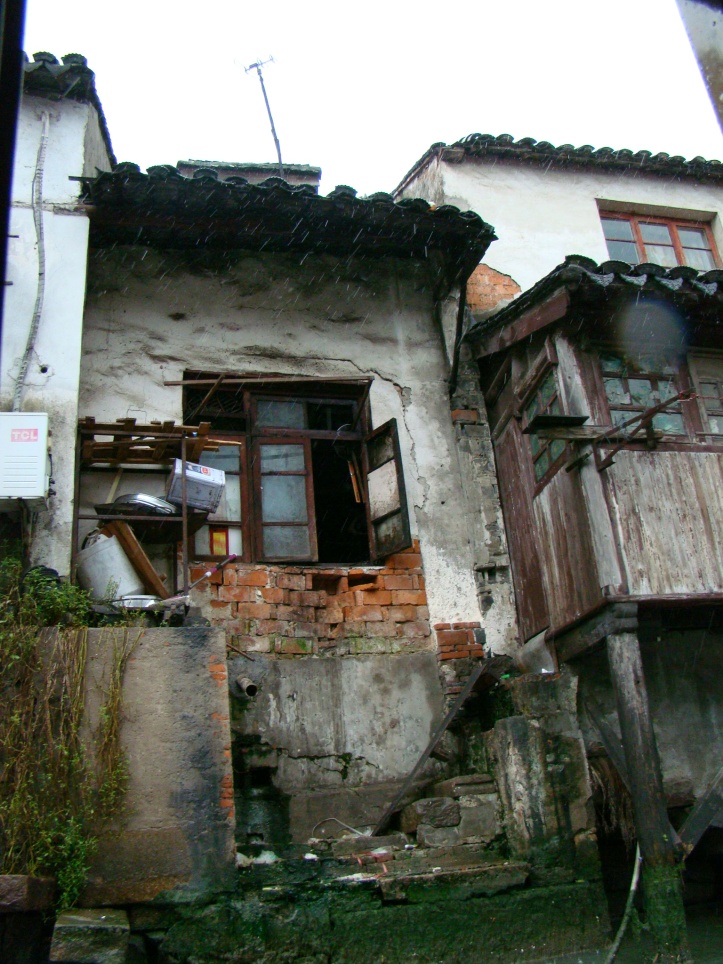

The Pingjiang Street is in the northeastern part of old Suzhou on a 116.5-hectare area, which has a 2,500-year history and the best-preserved cultural-protection zone of old Suzhou. Throughout history, many literary scholars, high officials, and members of the nobility lived in the quarter. It is an open district consisting mainly of residential buildings and its true value lies in the traditional style of living. The Pingjiang Quarter is part of the historic, cultural area of old Suzhou and has been in existence for 1,000 years, maintaining the style of the Song Dynasty. It is a portrait of “water and land, and rivers adjacent to the streets,” and a good example of the waterside towns south of the Yangtze River with their “small bridges over flowing streams, and whitewashed walls and black tiles”.
Suzhou is famous for its classical gardens and we couldnt leave without visiting them although it was pouring down outside. We ended up walking through two of Suzhous most beautiful gardens.
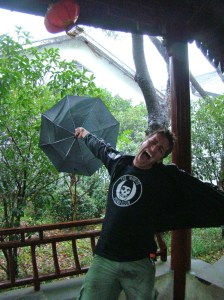
While walking through the parks umbrellas got blown away and we were soaked from head to toes by the time we finished exploring the second beautiful park.
Because of the Typhoon the parks were quite empty so we could get lovely photos of the gardens. Not a lot of people seemed crazy enough to walk through a park during a typhoon.
The Humble Administrator’s Garden is the largest garden in Suzhou and is considered by some to be the finest garden in all of southern China. It was the residence and garden of Lu Guimeng, a Tang Dynasty scholar. Later in the Yuan Dynasty it became the Dahong Temple’s garden.

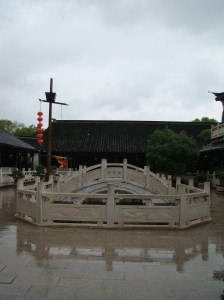
In 1513 CE, Wang Xiancheng, an Imperial Envoy and poet of the Ming Dynasty created a garden on the site of the dilapidated Dahong Temple which had been burnt during the Ming conquest. In 1510, he retired to his native home of Suzhou under the occasion of his father’s death. He had experienced a tumultuous official life punctuated by various demotions and promotions, and gave up his last official post as magistrate of Yongjia county in Zhejiang province, and began to work on the garden.
An Idle Life, “I enjoy a carefree life by planting trees and building my own house…I irrigate my garden and grow vegetables for me to eat…such a life suits a retired official like me well.”[4] This verse symbolized Wang’s desire to retire from politics and adopt a hermits life in the manner of Tao Yuanming.
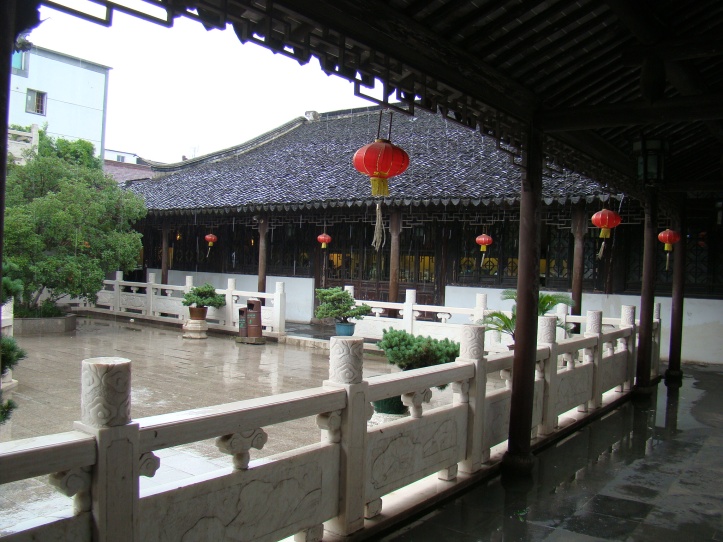
Wang’s son lost the garden to pay gambling debts, and it has changed hands many times since. In 1860, it became the residence of a Taiping prince, Li Xiucheng and it was remodeled, and the current aspect of the garden is said to be inherited from this period.
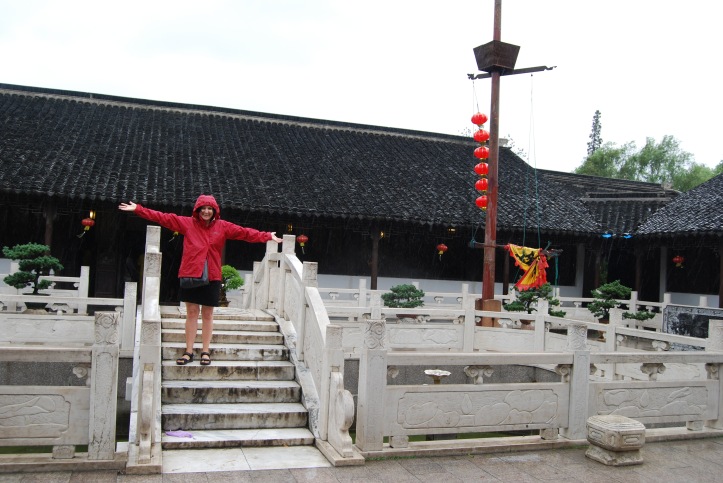
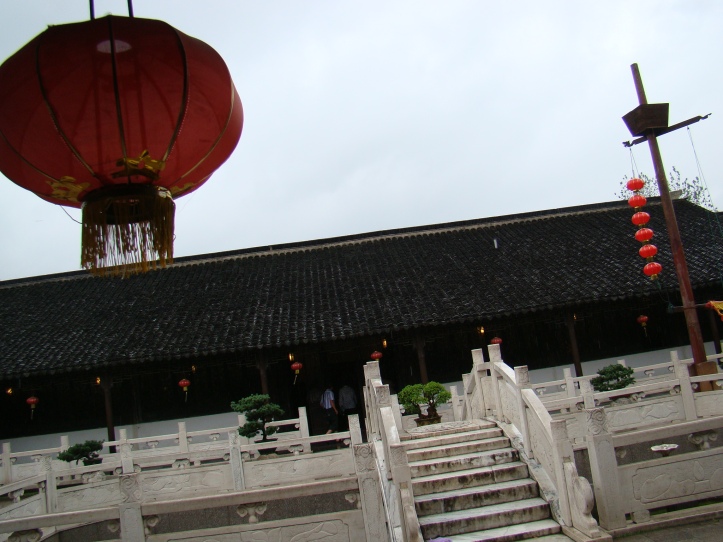
The garden contains numerous pavilions and bridges set among a maze of connected pools and islands. We couldnt apreciate the full beauty of it in the puring rain but it was still an amazing experience walking through this garden.
In total, the garden contains 48 different buildings with 101 tablets, 40 stelae, 21 precious old trees, and over 700 Suzhou-style penjing/penzai. No wonder we got lost a bit and it took us a while to find the exit again.
The second Garden we braved in the Typhoon was Lingering Garden a renowned classical Chinese garden.
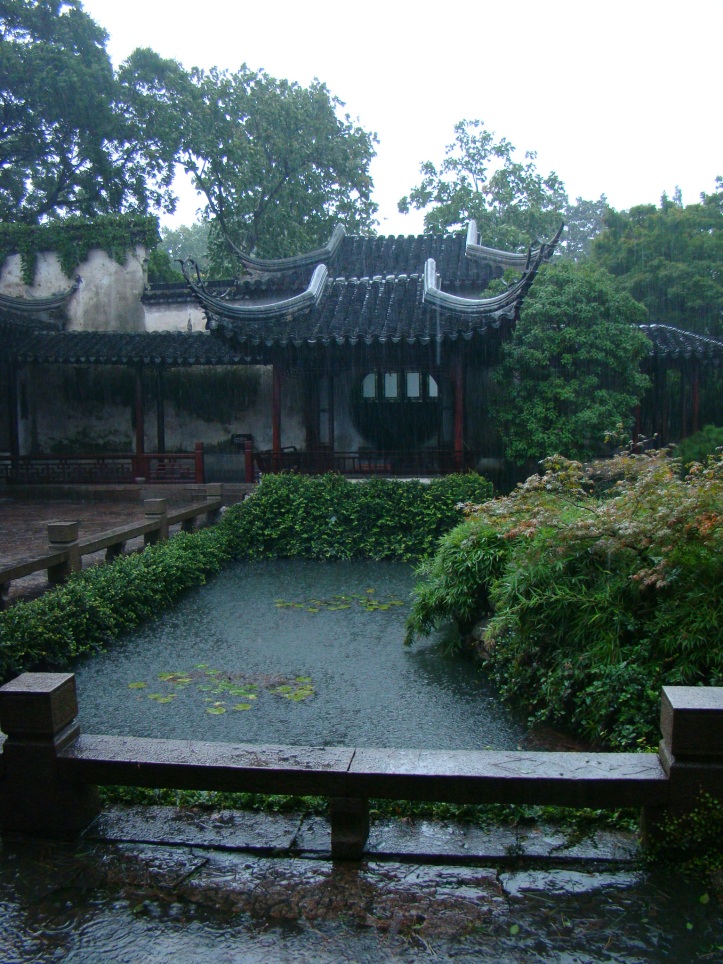
Lingering Garden was commissioned by Xu Taishi an impeached and later exonerated official in 1593 CE. Stonemason Zhou Shicheng designed and built the East Garden as it was initially called. The East Garden became famous in its day when the magistrates of Wu and Changzhou County both praised the design of Shi Ping Peak, a rockery constructed to resemble Tiantai Mountain in Putao.
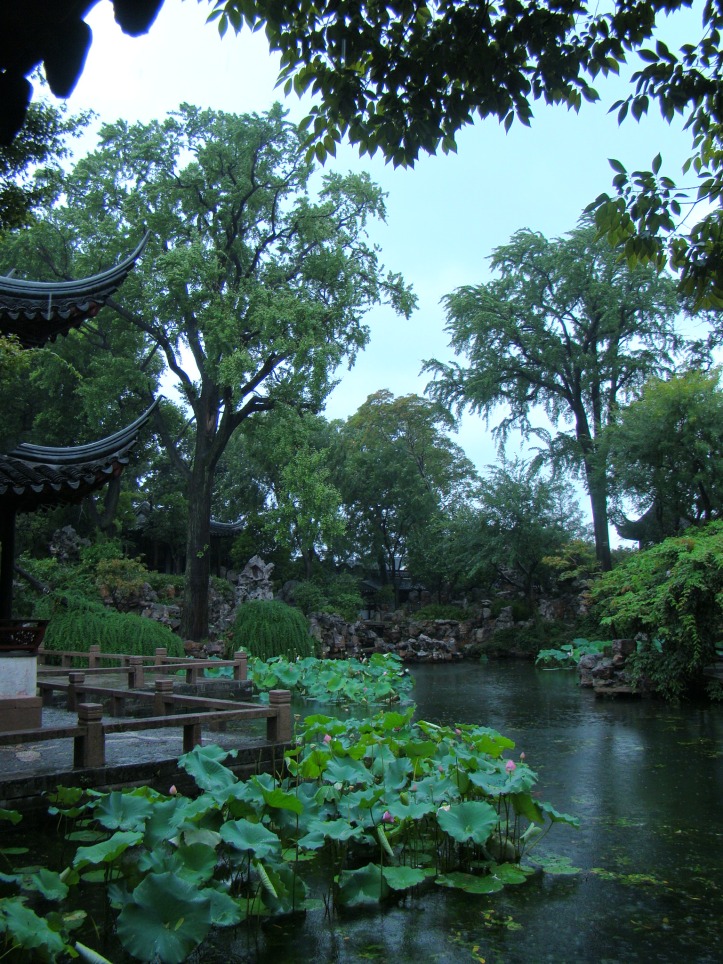
From 1823 CE the garden was open to public, and became a famed resort.
During Sino-Japanese War, the garden was abandoned, and it even degenerated into breeding zone for army’s horses. After establishment of the People’s Republic of China, Suzhou government took over and renovated the garden. It was reopened to the public in 1954.
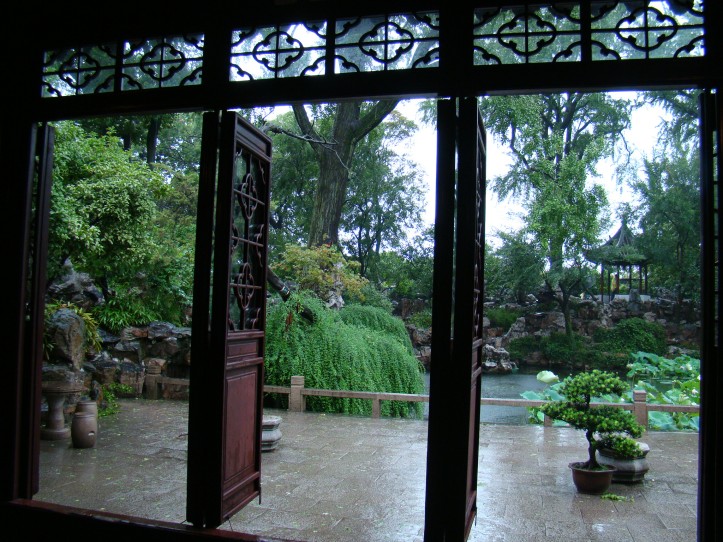
The 23,310 m2 garden is divided into four distinctly themed sections; East, Central, West, and North. The Central area is the oldest part of the garden. Buildings, the primary feature of any Chinese garden, occupy one third of the total area.
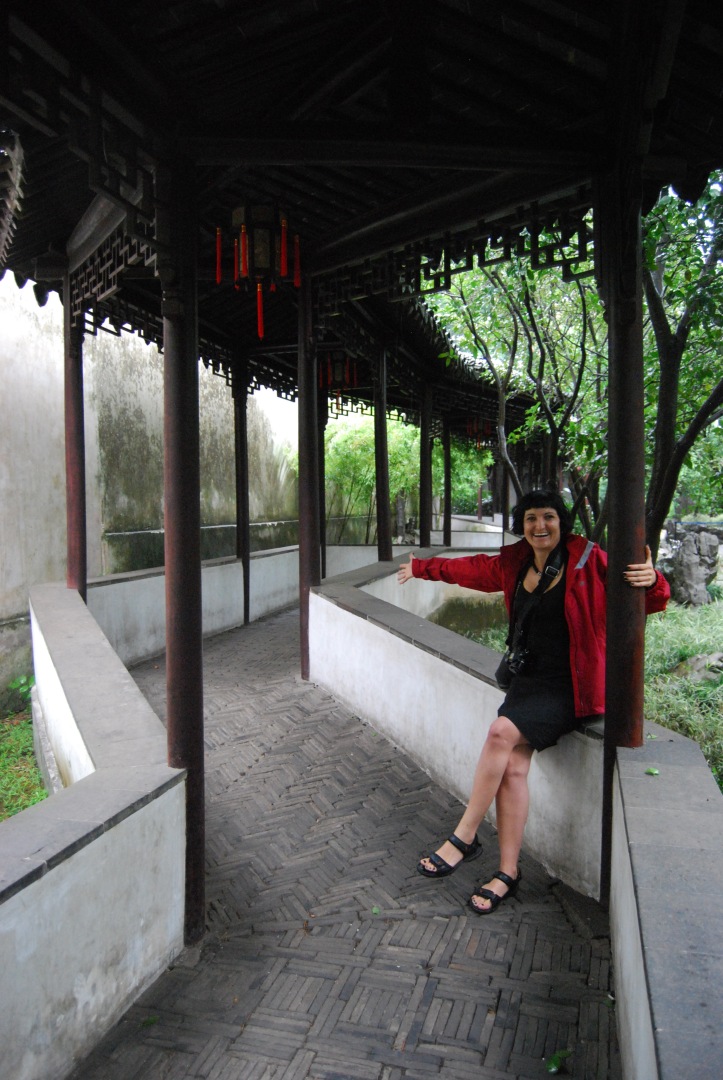
A unique feature this garden is the 700 m covered walk which connects the different sections.
The built elements of the garden are grouped by section. The ensemble of structures in the central garden encircles a pond and grotto main feature.
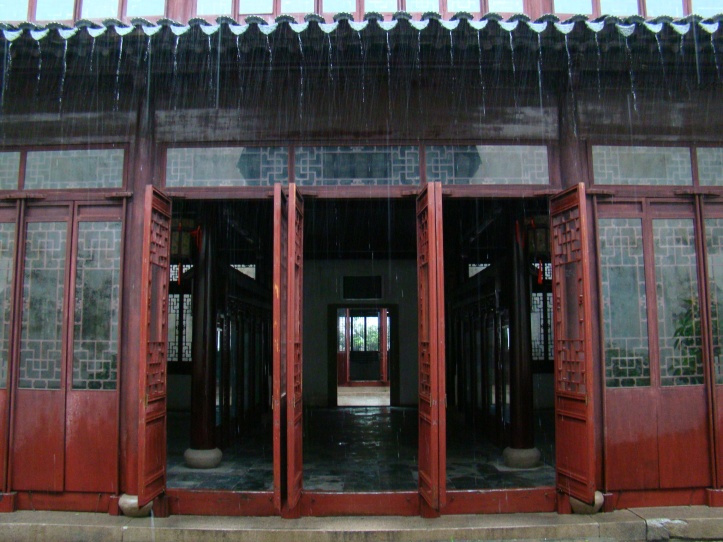
Behind the Old Hermit Scholars’ House is the SmallCourtofStoneForest, a collection of Scholar stones and connected minor courtyards.
The classical gardens in Suzhou were added to the list of the UNESCO World Heritage Sites in 1997 and 2000.

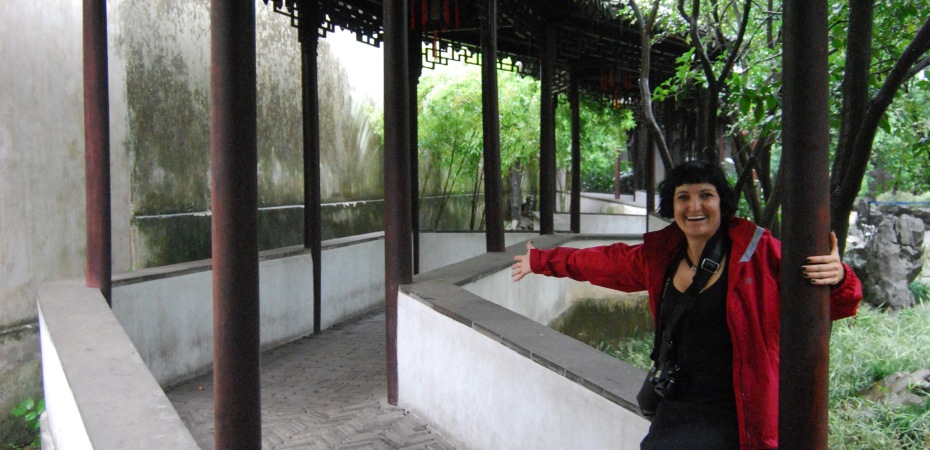
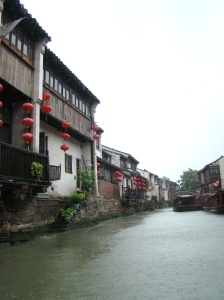


















[…] Janaline Smalman is a South African who has traveled all over this planet of ours and she shares her adventures with us all on Janaline’s World Journey – Adventures like “Walking through Chinese Gardens and Parks during a Typhoon“! […]
LikeLike
Talk about making the best of a worst situation!! You braved the typhoon and made awesome memories!! But I don’t know if an umbrella is enough to keep you dry!! 😉
LikeLike
I agree…even with a raincoat I was drenched to the bone by the end of the day. The only thing that stayed dry was my camera….and that took some doing protecting it under my raincoat most of the time.
LikeLike
Thanks for braving the typhoon to get these photos for us! Keep smiling 🙂
LikeLike
Thanks! It was quite an adventure!
LikeLike
great pictures and a very informational narrative! and you had a lot of fun under the rain! thanks for sharing!
LikeLike
It was quite an adventure walking through these beautiful places in the middle of a Typhoon and getting drenched to the bone. But it was definitely worth it!
LikeLike
You took beautiful photos through the rain 🙂
LikeLike
Thanks Amy! I was drenched seeing as the only thing I was worried about keeping dry was my camera. I was quite glad my camera survived and the pictures came out nicely.
LikeLike
What a fantastic and lovely place! Thanks for braving the typhoon and getting water-logged to bring these pics to us. It seems like a magical city out of a dream.
LikeLike
It was a fabulous place to explore although I was drenched to the bone most of the time. I will now forever asociate Suzhou with braving my first Typhoon!!
LikeLike
We loved our boat ride through Suzhou. A great way to take a back door look at how people live in these really old dwellings on the water. Thanks for sharing!
LikeLike
I agree Rusha, it was a lovely way to see how the locals live and get a glimpse of their houses. It was a beautiful boatride eventhough it was pouring outside.
LikeLike
Really nice shots. I’ll have to put this on my list of places to visit while I’m living in China.
Jimmy
LikeLike
Thanks Jimmy. I do hope you get to visit Suzhou, it is a lovely place and I am sure there will be so much more to explore in good weather. I loved China and hope you have loads of fabulous adventures while living in China.
LikeLike
Typhoon or not, you are never without a smile Janaline. A wonderful series of photos of a place that I must visit one day.
LikeLike
Thanks David! Eventhough I was drenched I still had an amazing time exploring these beautiful places. I never thought I would actually do exploring during a Typhoon or even step foot outside, so it was quite an experience.
LikeLike